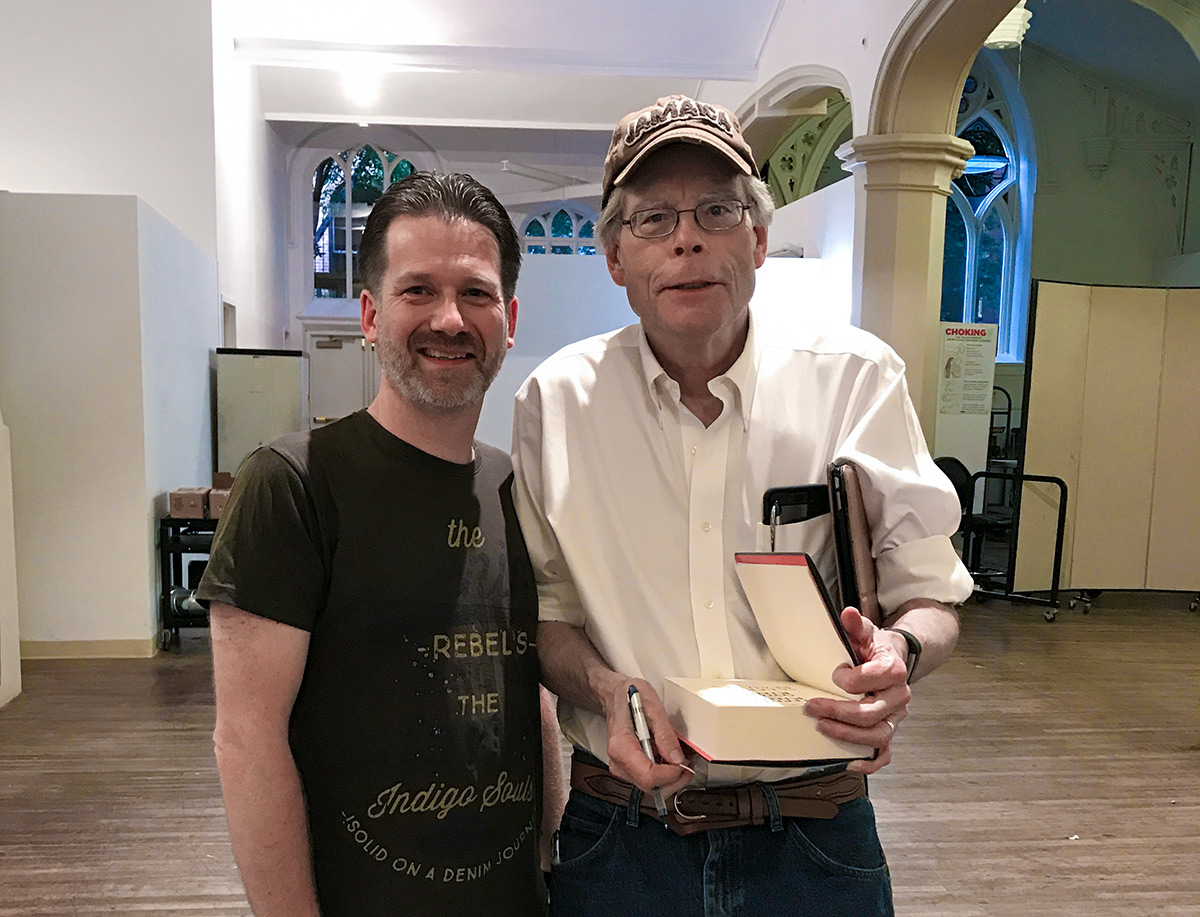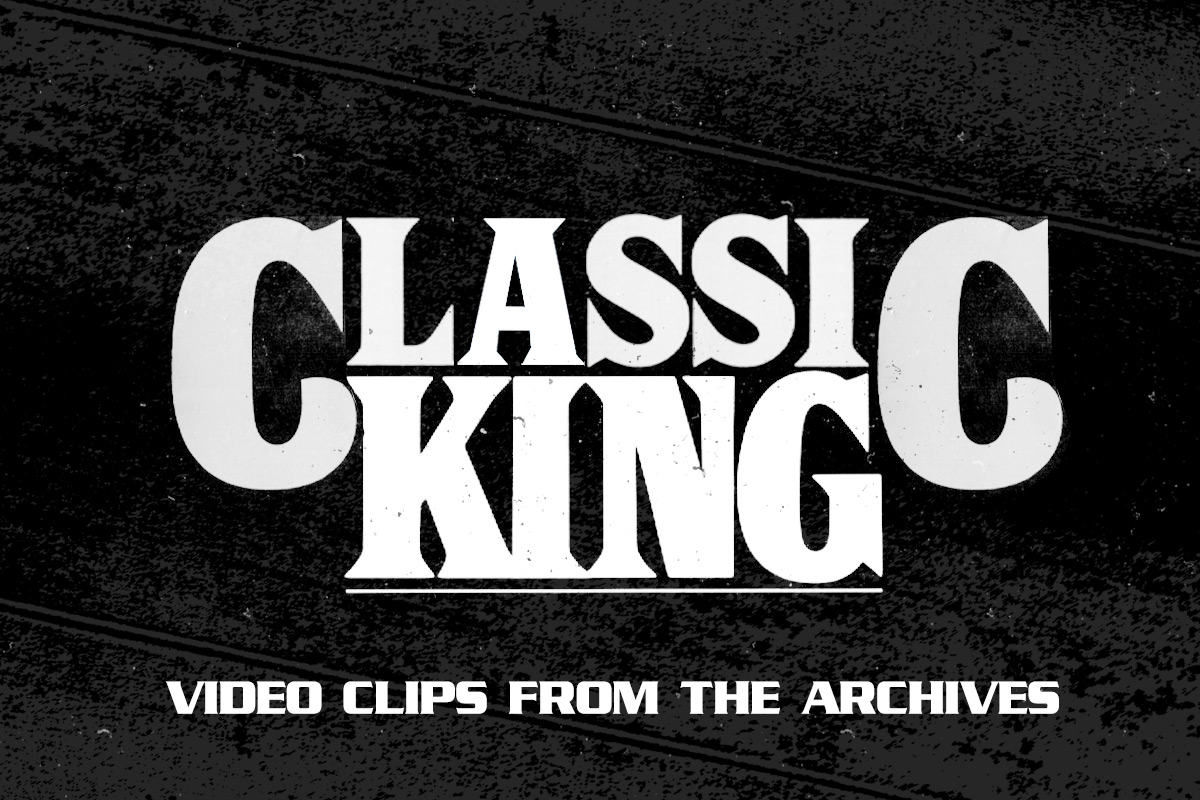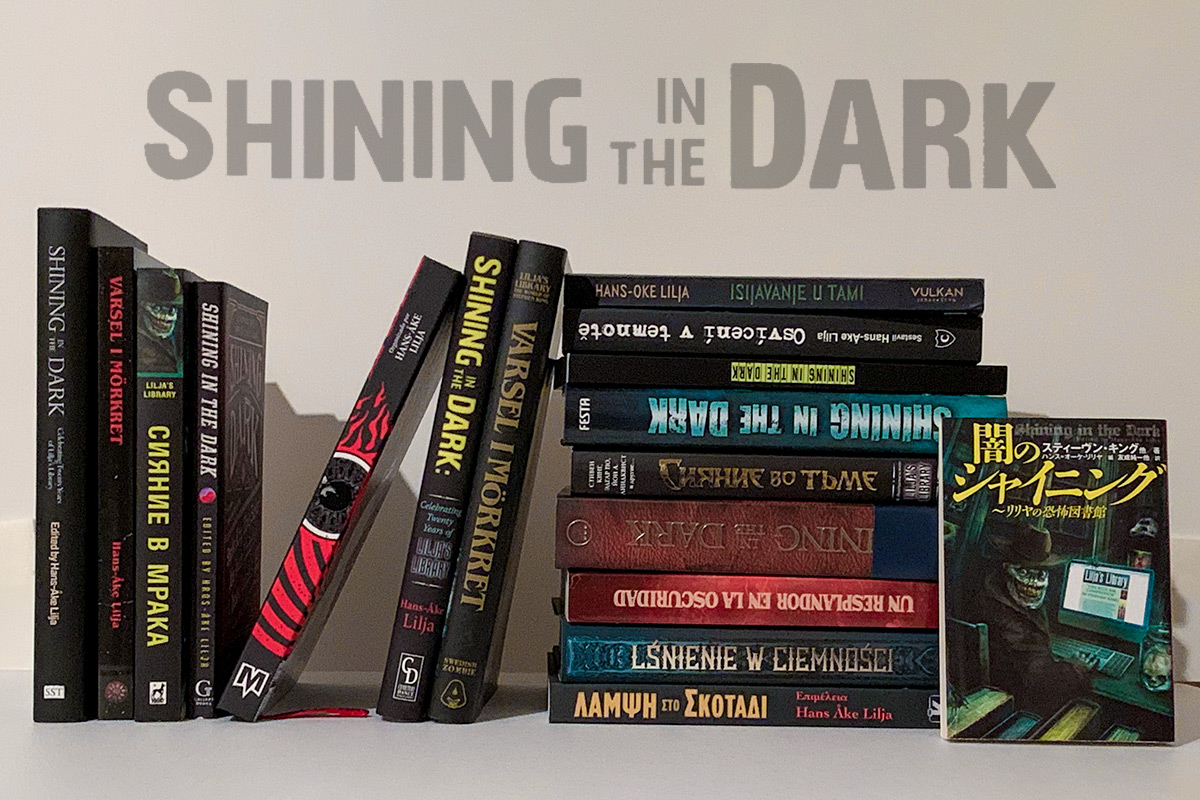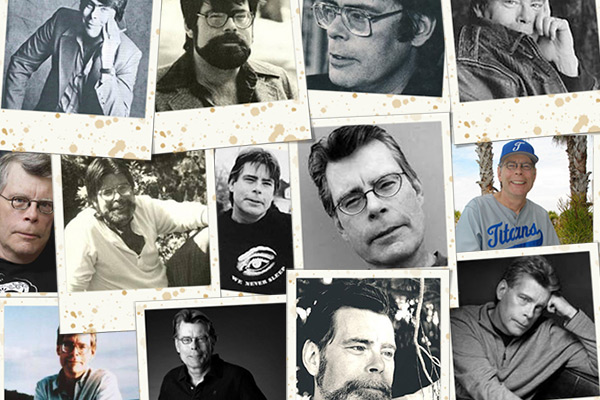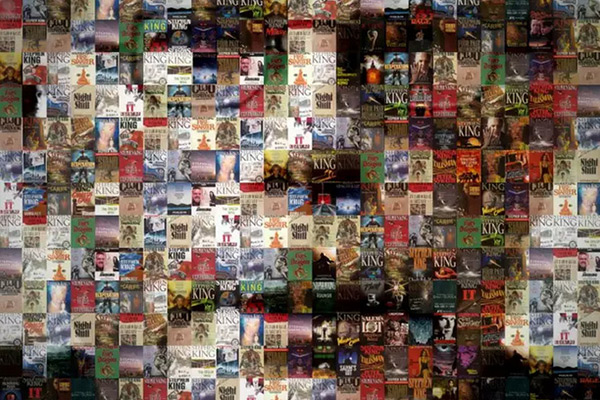Michael Whelan
Posted: June 23, 2004
_
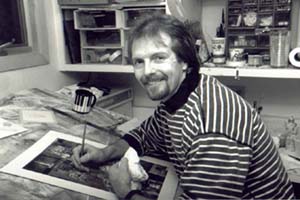 Michael Whelan has created hundreds of paintings seen on book covers, calendars, magazines, and record albums. He is a fourteen-time HUGO (World Science Fiction) Award winner and three-time (the maximum) winner of the HOWARD (World Fantasy) Award for Best Artist. The readers of LOCUS magazine, the #1 professional and fan resource publication for the Fantasy and Science Fiction genre, have awarded Whelan "Best Professional Artist" twenty-one years running.
Michael Whelan has created hundreds of paintings seen on book covers, calendars, magazines, and record albums. He is a fourteen-time HUGO (World Science Fiction) Award winner and three-time (the maximum) winner of the HOWARD (World Fantasy) Award for Best Artist. The readers of LOCUS magazine, the #1 professional and fan resource publication for the Fantasy and Science Fiction genre, have awarded Whelan "Best Professional Artist" twenty-one years running.Michael has had three art books published, the most recent being THE ART OF MICHAEL WHELAN. He has also illustrated the first book in The Dark Tower series, The Gunslinger and the last one in the same series, The Dark Tower.
I got the chance to talk to him and this is what he had to say:
Hi Michael and thanks for taking the time to speak to me!
Lilja: What is your relation to Stephen King? Where you a fan before you illustrated The Gunslinger? Are you a fan now?
Michael Whelan: Yeah, I've been a fan since I read Carrie, all those years ago. I had been asked to illustrate a limited edition publication of Firestarter when Steve wrote that, and I enjoyed the book and the assignment a lot. I've read just about everything of his in print with the exception of IT. For some reason, I haven't got around to reading that one. When it came out I bought it in hardcover but it has never made its way to the top of my bedside reading pile. One of these days...
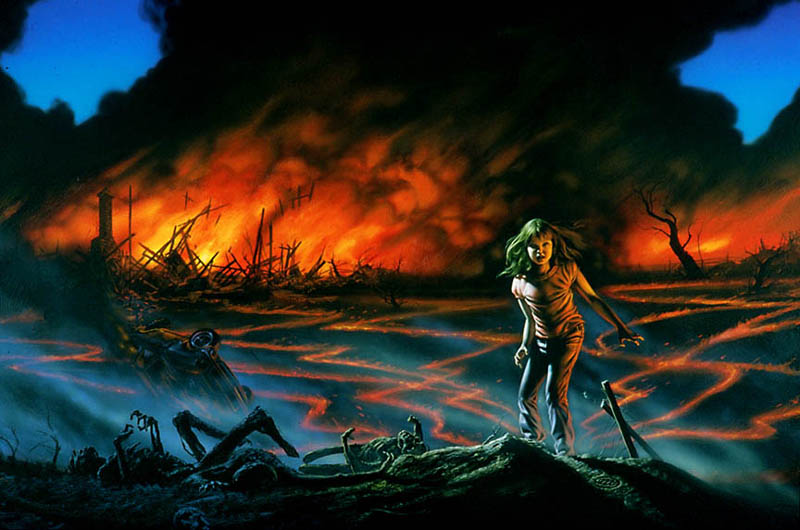
Lilja: Do you know Stephen on a personal level?
Michael Whelan: Not really. We've talked here and there but not for long or about much besides the books and their illustrations. We sat together on a dais at a World Fantasy Con banquet many years ago and talked a bit but as you can imagine there wasn't much time for casual chatting.
Lilja: How did it happen that you got the chance to illustrate The Dark Tower I - The Gunslinger?
Michael Whelan: I heard that Steve liked what I had done for Firestarter so he mentioned me for the first Gunslinger novel. Back in 1981 I think it was. I confess it wasn't in my heart to do the book, at least initially. At the time I was pretty depressed with my mother's death and other things too wearisome to go into here...and speaking of "weary," our daughter Alexa had been born just a few months before and I was so tired from lack of sleep I'm sure that affected my mood as well. The book seemed so bleak and stark that it was hard for me to get into the mood of it at first, but when I got into it as a way to exorcise those emotions it became easier. By the time I had read the whole thing I was hooked.
Lilja: And now your doing the last book in the series. Was that the plan all along or did King approach you later on asking if you where interested?
Michael Whelan: I was hoping to get to do another one all along. Being an ardent fan of the series, my impressions of the main characters and elements of the books have evolved...and I felt another try might get closer to my more informed internal views of everything. Of course I had been following the series as avidly as the rest of the fans, so I was very excited to hear from Robert Weiner at Donald M. Grant that Steve was going to "finish off" the series in one fell swoop, so to speak. Then he asked if I'd consider illustrating one of them I was one happy guy. Later, Steve called me and said "Well, here it is twenty-odd years later and we're still both alive, so what do you say to doing the last one?"
Lilja: What was the biggest difference between illustrating The Gunslinger and The Dark Tower?
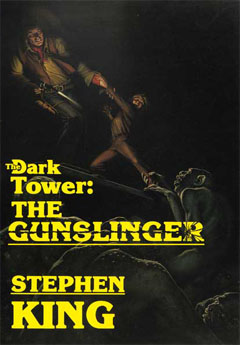
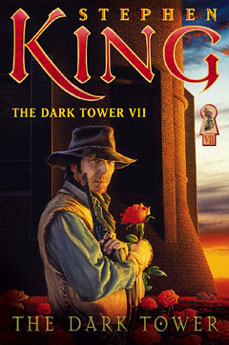
Michael Whelan: Well, there's me, and there's the story. I'm two decades older -- a little more tired, damaged, and cynical -- than the guy who illustrated that first book. I hope I'm a little wiser as well. What that has to do with my artwork is impossible for me to gauge. Anyway, the obvious big difference is that I approached the reading of the last book with the "stone greed" [as King puts it] of a true DT junkie. It was easier to illustrate the first book because [as it was written then] it was a more linear story, not so interwoven with all the later themes and running plot lines which have since come to be. Plus at the time I assumed that I was illustrating the one book only, not aware that the story would come to span two decades and seven plus books. Maybe my memory is playing tricks on me but I don't recall knowing at the time that were was going to be more to Roland than The Gunslinger. Anyway, there's a lot more pressure working on the concluding segment of any series, especially with one so long, complicated, and anticipated.
The story...well, the story has twisted and turned in all kinds of ways that I didn't see coming. The books following The Gunslinger have added vast dimensions [literally!] to the story. All the running themes and plot lines which weave through the tapestry of the narrative make illustrating it a more touchy business. Then there's the additional characters, who, like Roland, have gained so much depth and meaning in the course of the narrative. Like I said before, all these things added together made the illustrating of the last book a much more involved process.
I admit I was daunted by the enormity of the project. Eventually I had to tell myself to just draw what I felt would be fun to see and let, er, Ka sort the rest out.
Lilja: How many color / black and white illustrations have you done for The Dark Tower VII? Did you end up with any illustrations for the book that wasn't used in the finished book?
Michael Whelan: The final total was, I think, 13 color paintings, 12 monochrome paintings and 34 spot illustrations in pen and ink for the book. I won't know what will end up being used and what won't until the book comes out. It could well be that the designer for the book [or SK himself] will decide to cut some of the work out that is not up to the rest and that's okay by me. I just want the book to be as good as it can be. I'm too close to the book and the work to really judge the relative merits of the work, so if someone at Don Grant decides that a piece should be left out I'll defer to their judgment.
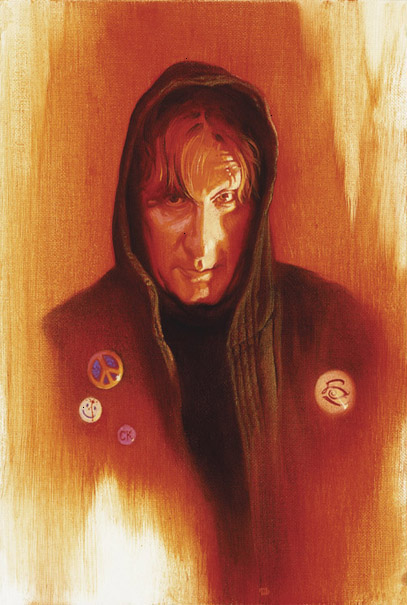 Lilja: What happens to those illustrations? Will the fans ever see them?
Lilja: What happens to those illustrations? Will the fans ever see them?Michael Whelan: Yeah, I'll post 'em onto my web site after the last book come out. Eventually. I'm considering taking some of the work to the WorldCon in Boston this September. Most of the artwork has already been sold.
Lilja: You told me when I got the world premier of one of the illustrations for The Dark Tower VII that that one was the only one you could allow me to show because the others revealed to much of the story. Was this done deliberately? In many of the other books there are quite few illustrations that wouldn't say much about the story without the text.[When this interview was done the plan was to have the world premier of the image of Roland at Lilja's Library but before I got it all done it had already been displayed at King's official site...]
Michael Whelan: Well, it's just the way I approach it I guess. I chose to illustrate scenes that captivated my inner vision, and most of them are events critical to the telling of the story.
I always thought that illustration tends to fall into two broad categories. First, there is the illustration of decoration, something pretty to sell a book by. It may have an appeal in that it dresses up a publication and adds a measure of visual interest to a text, but it usually hasn't much to say about, or add to, the story. Often that sort of illustration seems as much about itself as it does about the book it appears with.Sometimes it doesn't say anything about the story, or even worse, is deliberately misleading [you can't judge a book by it's cover].
The other type of illustration is that of elucidation...literally, throwing light on the story it accompanies. it gives light to the author's vision by attempting to make the characters, events, etc., visually real to the reader. Its a much more chancy business, because it's easy to make a mistake and misrepresent something that is described by an author. [For example, I've often painted an image for a story based on a first draft, only to have the scene/characters changed substantially in the final published work...after its too late to change.] More often an artist makes an error in how the 'feel' of a scene is interpreted in details not covered in the text, and can cast a quality on a passage that the author either didn't intend or didn't think out. At its best such illustration is a good representation of the author's vision and even helps to expand it a bit...and is fun and enlightening for the reader.
I think the best illustration works as both types at the same time. It's pretty rare that it happens though.
Lilja: On your site it says that it took you about a year to do all the illustrations for The Dark Tower VII. Is that the time it takes to illustrate a book with approximately as many illustrations as The Dark Tower VII?
Michael Whelan: For me, yeah -- but I'm slow. Of course, during that year I dislocated my arm playing baseball, and I was [as usual] late in getting started because projects before the DT7 one ran well over time...so there were some factors which delayed me by quite a bit when you add them all up. But I admit I'm a slow painter and it was a lot of work for me to get done. I usually do one color painting a month, so it was about my usual turnaround time I guess.
Lilja: How does it work when you illustrate a book like The Dark Tower or The Gunslinger? Do you get to decide what scenes should be illustrated or does King have a say in it? Also, do you decide what'll be the cover, endpaper and so on?

Michael Whelan: Hmm, a three-fer! I rarely do fully illustrated books, let's get that establish first. It's a very rare thing for me to do anything but the cover. With those commissions, I receive a manuscript, read it, and submit from 1 to 12 concept sketches. One is chosen by an art director and I'm given the green light to do the final painting based on the approved concept.
With this book, it was a different setup. I was offered a fee to paint a number of paintings for the interior, one for the endpapers, and a few black and white illos for the book. It was purely my decision to paint a separate image for use as a cover image, but they generously paid me extra for the effort. I admit I went a little nuts with the b/w spots illustrations but I thought it would be fun to have a unique one to end each chapter with so I just kept rolling until they were all completed. I bought a sketchbook and as I read the manuscript I kept doing drawings which seemed good for each chapter until I filled the sketchbook up with the drawings. I enjoyed the story so much it was difficult to stop working on it and begin thinking of doing something else!
When I was initially contacted about the project, I was presented with a legal document that insisted I give Steve first right of refusal on all the images I created. It also said that he had to approve each idea before I could paint it and blah blah so I said to him, "Steve, what the hell is this?" He was very cool about it and said "Forget about it, just do whatever you want. I'm sure it'll be great."
Lilja: How does the illustration process work? Let's say that you have the scene that should be illustrated, what happens now?
Michael Whelan: You may find this hard to believe, but I threw away any established procedures when I did the work for this one. My only guide was my immediate response to a particular scene; that immediacy was my guiding principal. Some of the illustrations are in oils, some in acrylics. Some I drew out in charcoal first, some were painted directly with no preliminary work.
For most of them I did a rough concept sketch in charcoal or acrylics. Some of them I did a little color sketch for, before beginning. Then it was off to the races.
Lilja: If you could choose another King book to illustrate, anyone you want, which one would it be and why?
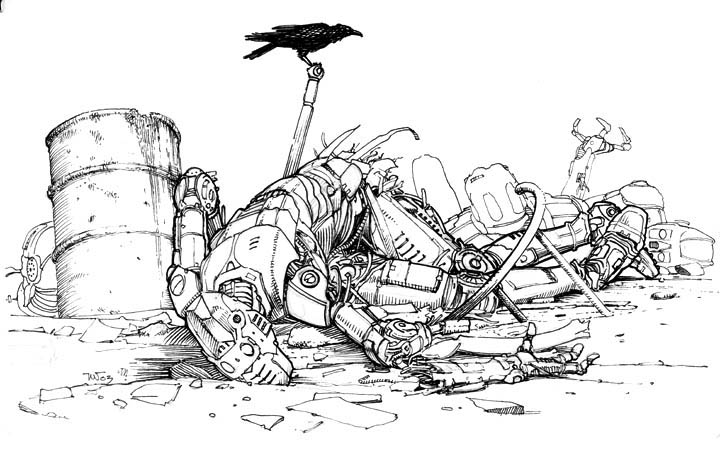
Michael Whelan: Oh god, what a question. I'd have to say the short story The Reach. It affected me very deeply and I think it one of King's best. It'd be a challenge! Hearts in Atlantis would be a front runner as well.
Lilja: If I want to see more of your work, where do you recommend me to look?
Michael Whelan: Well, my three art books are out of print, though I hear some people can find the most recent one The Art of Michael Whelan via ebay on occasion. There are some of the deluxe remarqued editions left via Glass Onion Graphics, our publishing and retail firm. You can get info about all that via my web site, michaelwhelan.com.
I know it's time for me to do another big book, but it's hard to get started on any project that takes me away from just painting. But eventually we'll get to it...probably sometime late this Fall. We have to find a publisher first. When it gets done, I think it will feature mostly my gallery work for a change.
Lilja: Do you have any last words (yes, I'm aware how gruesome that sound) for all yours and King's fans out there reading this?
Michael Whelan: Withdrawal is a bitch, but man, what a great ride we had, eh?
Lilja: Thanks again for you time. It was fun!
All illustrations are published with permission from Michael Whelan and Donald M. Grant.

